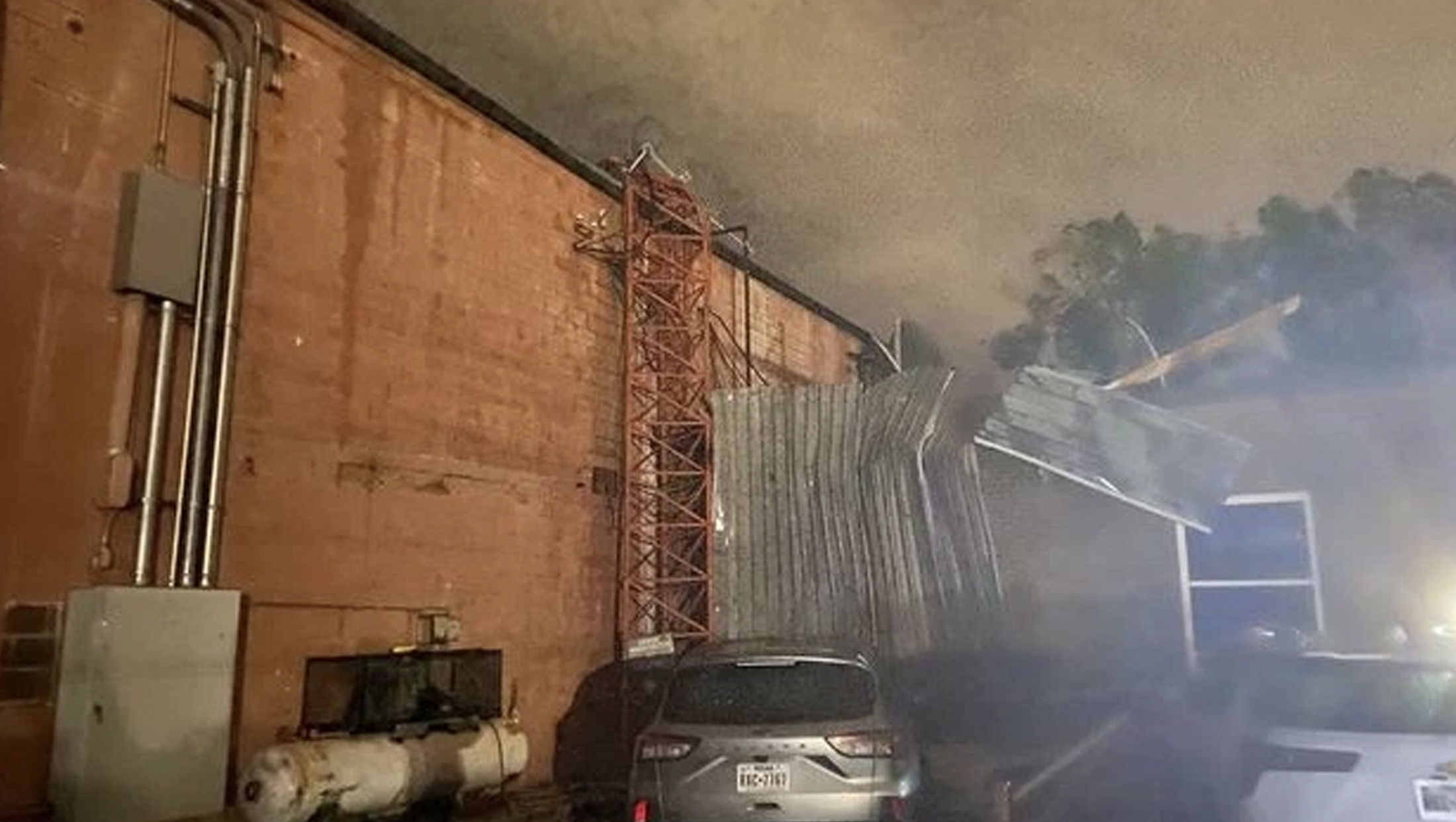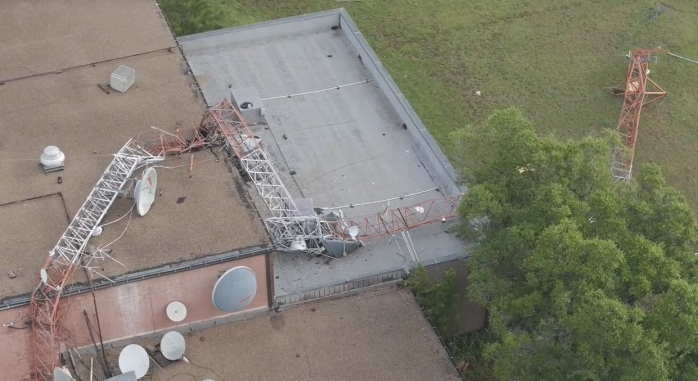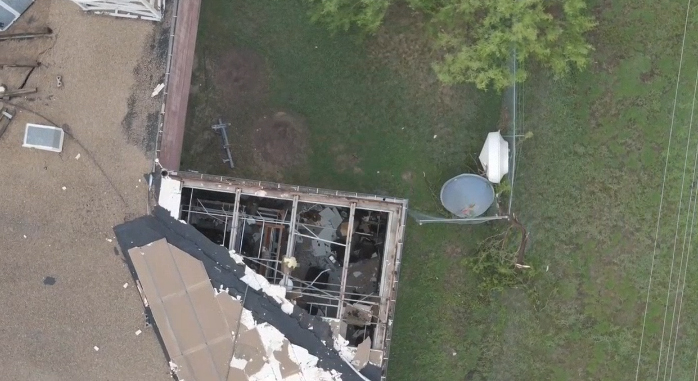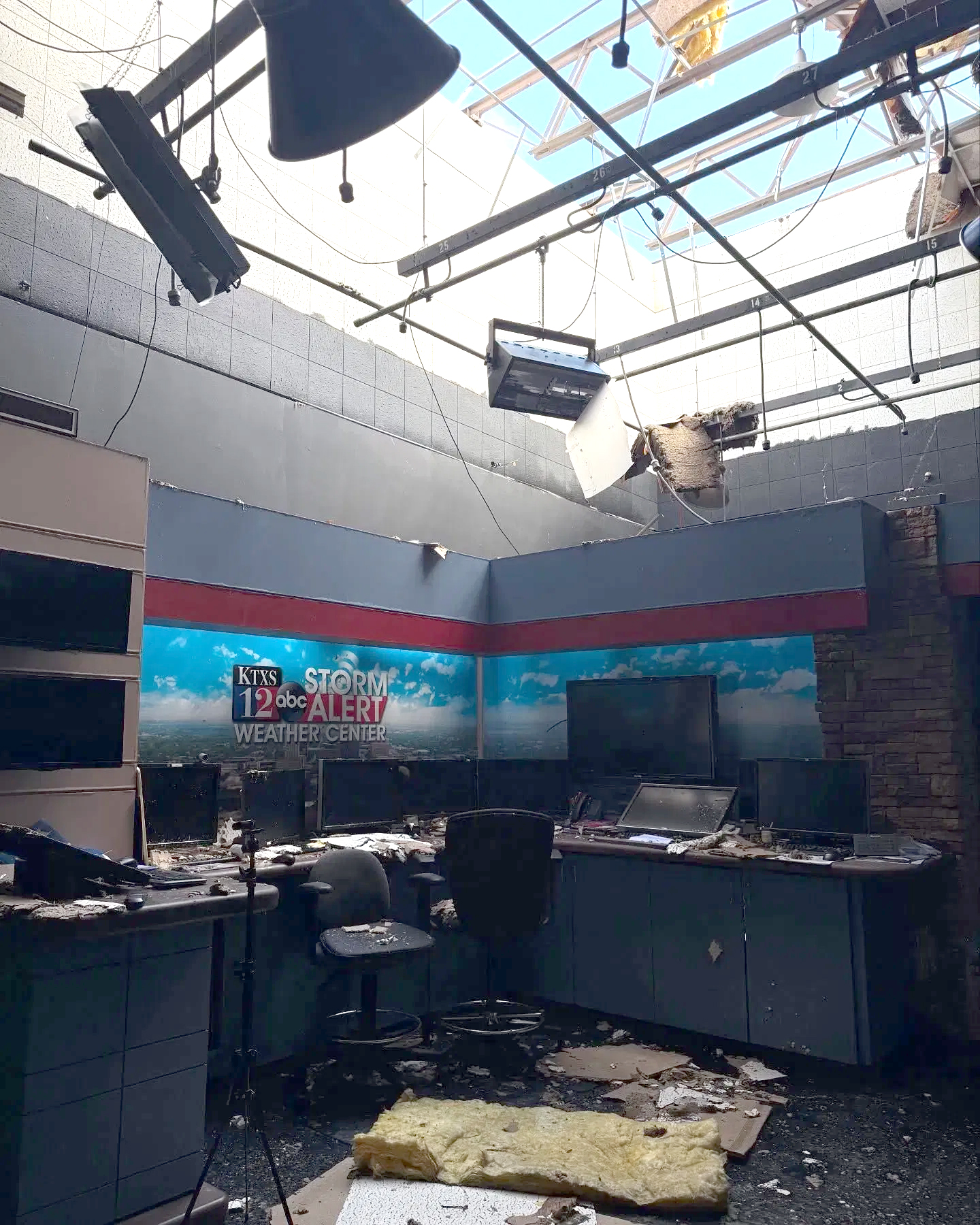Texas station knocked off the air by tornado, which also damaged its studio and building

Subscribe to NCS for the latest news, project case studies and product announcements in broadcast technology, creative design and engineering delivered to your inbox.
KTXS, a Sinclair station in Sweetwater–Abilene, Texas, was significantly damaged after a tornado barreled through the region.
The storm hit around 11 p.m. local time on June 8, 2025, and destroyed the broadcast tower and caused significant damage to the building, located in central Texas.
Photos posted by the station show the mostly intact base of the steel tower running up the back of the station. However, once it hits the roofline, it twists abruptly, with a segment appearing to be flopped over on top of the building’s roof. It then takes another turn and continues across another portion of the building before seemingly spilling out over the front of the station.

Aerial footage also shows what appears to be HVAC equipment in the middle of a collapsed section of the roof.
The damage was caused by wind gusts of over 80 mph that accompanied the a major storm system moving through the region. The NWS has yet to fully assess the damage as of the time of publication to formally confirm if it was a tornado.

The roof over the studio appears almost as if it’s been peeled back, leaving parts of the weather center and news set visible from the sky.
The station was on the air at the time, providing live updates to viewers.
Chief meteorologist Mark Rowlett was working inside the station’s Storm Alert Weather Center with colleague Caiden Dinkins when the storm hit. Both forecasters attempted to take cover in the studio as the winds ripped the roof off the studio immediately above the weather workspace.
By day, the sky can be seen above the grid and rafters. Pieces of insulation and building materials littered the space in a photo released by the station.

Photo courtesy of KTXS/Caiden Dinkins
From the sky, it appears as though the roof of the studio was peeled back like a page in one corner. Similar damage can be seen on the nearby garage, which partially collapsed on top of one of the station’s vehicles.

The radar dome, left, still stands next to the largely-collapsed garage to the right. The studio roof opening is just to the left of the dome.
Ironically, the small Doppler dome on the other side of the building looks largely fine, at least from a cosmetic standpoint, but could have suffered more damage that isn’t visible.
The station also suffered significant flooding. It does appear that most of the damage was confined to the back of the station and the front portion where the tower came to rest. It’s unclear whether some portions of the building may have sustained less damage and might be salvageable.
Thankfully, everyone in the building made it out safely, according to multiple staffers’ social media posts.
According to posts, the building also lost power and it appears the damage may be too significant to bring any backup power online. The station is still updating its social media feeds on a limited basis but appears to be largely hindered due to the damage and given the state the building appears to be in, it’s possible the outage could last longer as engineers and staffers work to re-establish operations, possibly at a temporary location.
The transmitter for the station is located about 25 miles away and was not impacted by the storm
On vMPVD YouTube TV, the station is airing the ABC national feed.
In the past, stations knocked off the air by severe weather have sometimes leaned on a sister station to handle master control and, at times, even provide cable and satellite TV providers with a feed.
Sinclair Broadcast Group also owns a small handful of other stations in Texas. The closest (besides KTXS satellite station KTXE), is KVII in Amarillo, about 125 miles from Abilene.
On Monday, June 9, the KTXS feed originated from KABB in San Antonio with KEYE in Austin providing weather. Sources note that KABB will likely continue to provide newscast assistance until operations are fully restored.
Editor’s Note: Story updated to clarify the condition of the station transmitter.
Subscribe to NCS for the latest news, project case studies and product announcements in broadcast technology, creative design and engineering delivered to your inbox.





tags
Abilene, Caiden Dinkins, kabb, KTXS, Mark Rowlett, Sinclair Broadcast Group, sinclair broadcasting
categories
Broadcast Facility, Broadcast Industry News, Featured, Local News